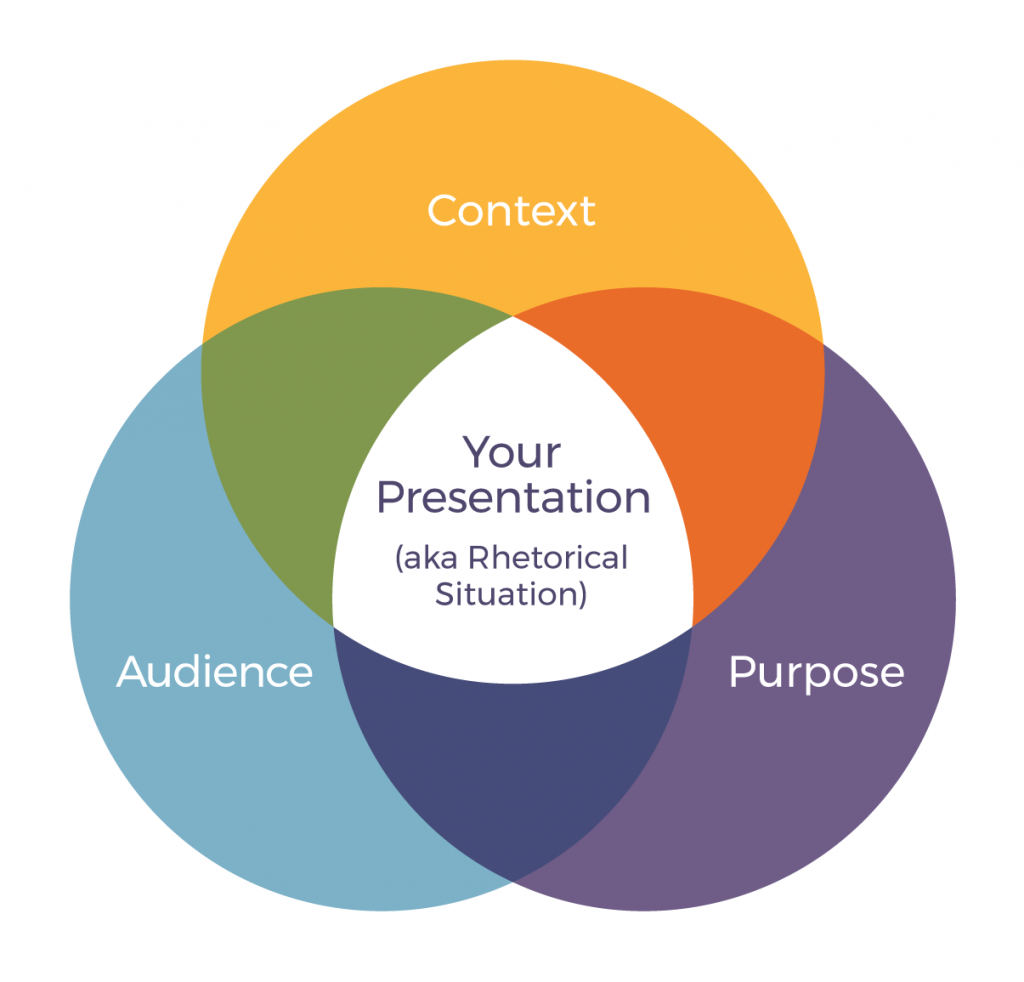Group Presentations
44 Rhetorical Situation
eCampusOntario

In the classical tradition, the art of public speaking is called rhetoric; the circumstances in which you give your speech or presentation are the rhetorical situation. The audience gives you the space and time as a speaker to fulfill your role and, hopefully, their expectations. Just as a group makes a leader, an audience makes a speaker. By looking to your audience, you shift your attention from an internal focus (you) to an external (them/others) emphasis. Several of the first questions any audience member asks himself or herself are, “Why should I listen to you?” “What does what you are saying have to do with me?” and “How does this help me?” Generating interest in your speech is the first step as you guide perception through selection, organization, and interpretation of content and ways to communicate your point.
The rhetorical situation involves three elements: the set of expectations inherent in the context, audience, and the purpose of your presentation (Kostelnick & Roberts, 1998). This means you need to consider, in essence, the “who, what, where, when, why, and how” of your speech from the audience’s perspective. Figure 5.1 below demonstrates the three-part set of expectations in the rhetorical situation.

Fig. 5.1 Context, Audience, and Purpose. Your presentation depends on your knowledge of these three elements of rhetoric.
Context
Your presentation is given in a space that has connection to the rest of the world. The space you’re presenting in, the time of day, and even the events going on in the world around you and your audience will affect the decisions you make in preparing for your presentation.
Audience
The receiver (i.e., listener or audience) is one of the basic components of communication. Your audience comes to you with expectations, prior knowledge, and experience. They have a wide range of characteristics like social class, gender, age, race and ethnicity, cultural background, and language that make them unique and diverse. What kind of audience will you be speaking to? What do you know about their expectations, prior knowledge or backgrounds, and how they plan to use your information? Giving attention to this aspect of the rhetorical situation will allow you to gain insight into how to craft your message before you present it.
Purpose
A presentation may be designed to inform, demonstrate, persuade, motivate, or even entertain. The purpose of your speech is central to its formation. You should be able to state your purpose in one sentence or less, much like an effective thesis statement in an essay.

